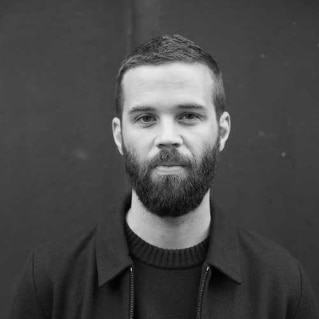In 1959 the Four Seasons restaurant opened on the mezzanine floor of the Seagram building – a 38-storey modernist skyscraper in the heart of Mid-Town Manhattan.
A year earlier, in what was then perhaps the most high-profile public commission ever given to an abstract expressionist painter, Mark Rothko was briefed to create an exquisite collection of murals to be hung in the restaurant’s most exclusive room.
From the autumn of 1958 to the following summer Rothko immersed himself in the brief. But not as you may think. In his 1970 biography of the artist, Harper’s Magazine Editor John Fischer recounted how Rothko couldn’t bear the prospect of his work installed in “a place where the richest bastards in New York will come to feed and show off.” Rather than turning down the commission Rothko turned his attention to sabotage, vowing to create a collection that would “ruin the appetite of every son-of-a-bitch who ever eats in that room.”
Influenced by the grim blind windows and deliberately oppressive atmosphere of Michelangelo’s Laurentian Library in Florence, Rothko created a series of brooding paintings. Out went the oranges and yellows of his previous work and in came a depressingly drab mix of maroons, dried blood reds and blacks. Disgusted by the restaurant’s dubious opulence and whiff of pretention, Rothko eventually returned his advance and withdrew from the commission.
In hiring Rothko, the restaurant’s owners thought they were getting the best in the business. And they were. Rothko was a seminal artist of consequence. The project’s commissioner, architect Phyllis Lambert, gave Rothko all the tools he needed to leave an iconic creative imprint on a space dubbed the Building of the Millennium by New York Times critic Herbert Muschamp. Everything was lined up perfectly. And yet the end result was a piece of work that served neither the creative nor the client.
From the outset Rothko and Lambert’s relationship lacked genuine empathy. Rothko’s values weren’t aligned with those of the commissioner.
The relationship was devoid of a shared vision, a reciprocal passion and a mutual sense of excitement for what the project was and what it could become. And as a result the relationship was bereft of genuine chemistry. From day one the project therefore stood little chance of success.
Rothko’s Four Seasons malaise shows how the creative process breaks down when something as vital as chemistry is missing from the creative-client relationship. Driven by a personal and cultural alignment between client and agency, real chemistry is at the heart of most successful relationships. No matter how talented or visionary the people involved are, if their values are not aligned, creating a desirable conclusion for both parties is virtually impossible. A lack of chemistry can turn a seemingly promising partnership into a torturous nightmare for all parties.
Fostering a fruitful and fulfilling relationship means looking beyond the now outdated ways brands traditionally find agencies. In a ferociously-competitive global creative environment, brands want something much deeper than the conventional client-provider relationship. They want to partner with someone who can go into battle with them. Someone who gets them. The client and agency must be willing to get in the trenches together, to fight for a unified goal. They must share the same values, fitting together culturally and emotionally in what they do and how they do it.
When brands seek out a creative for support with a project, they instinctively reach for the artist’s portfolio of previous work. Due diligence often amounts to little more than a retrospective glance at what has gone before. But past performance is not a guarantee of future returns. Who is to say that the creative’s previous clients’ needs were anything like yours? Increasingly we’re finding that a better determinant of future success is chemistry. Those that hit it off are much more likely to do amazing things together than those that don’t.
The curious case of Mark Rothko illustrates perfectly the dire consequences when creatives are hired based on reputation alone. Brands must find a talented partner who is excited to work with rather than for them. This shared sense of purpose fosters the kind of hard-won trust that is inherent in most successful partnerships. Having great chemistry isn’t a guarantee of success, but truly iconic work is rarely done without it.
Preview image: Mark Rothko, photo John Gevers


